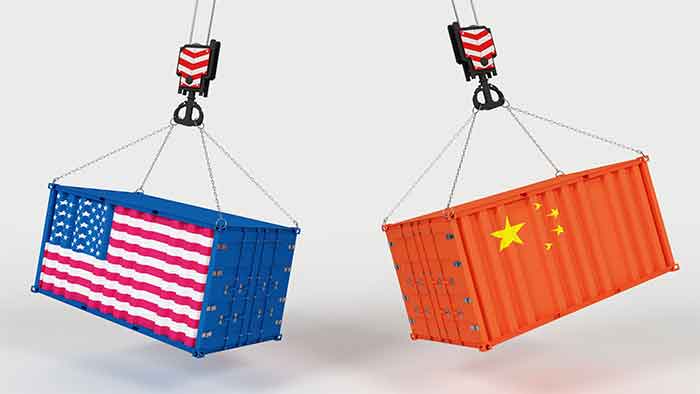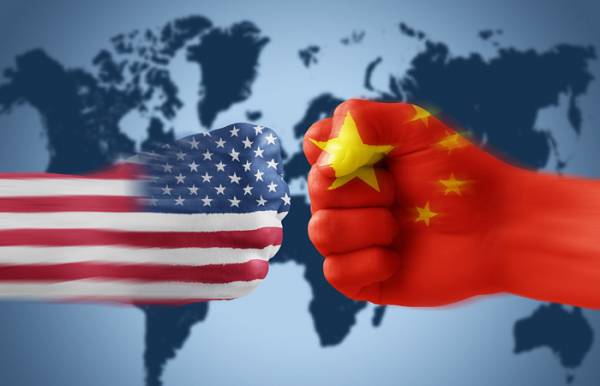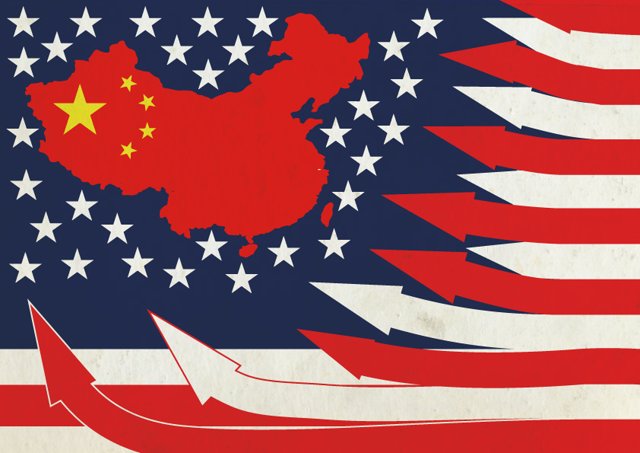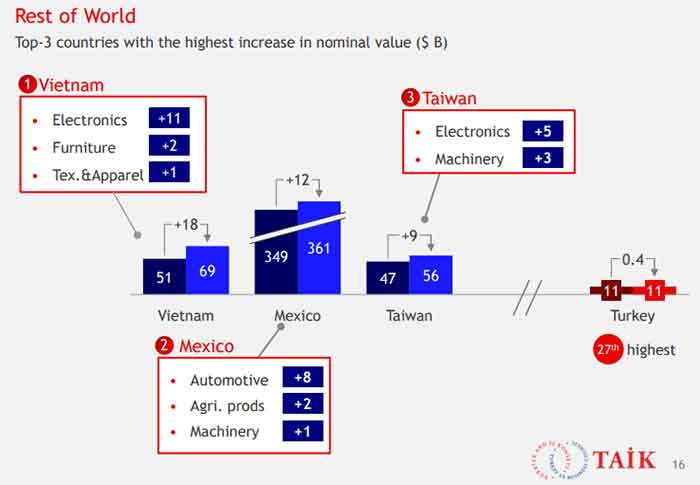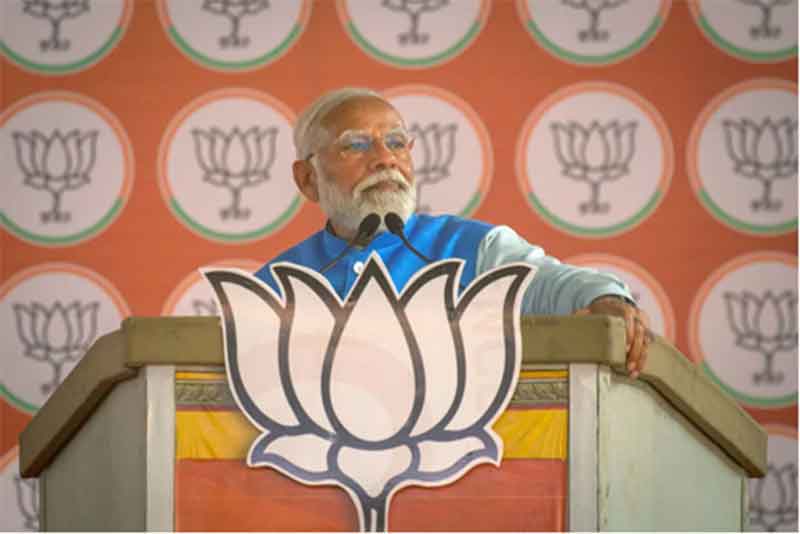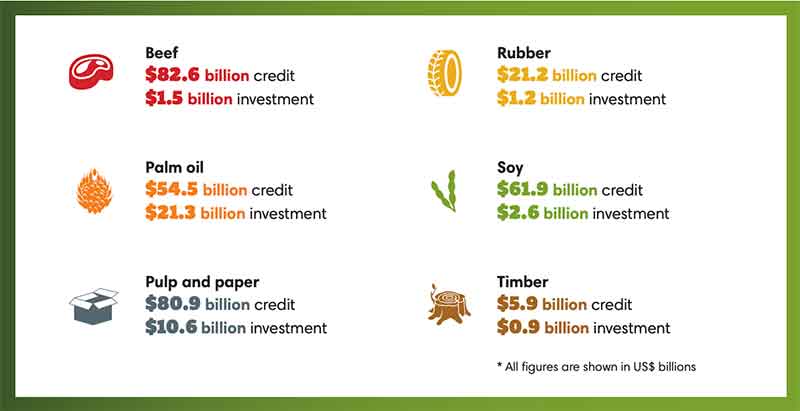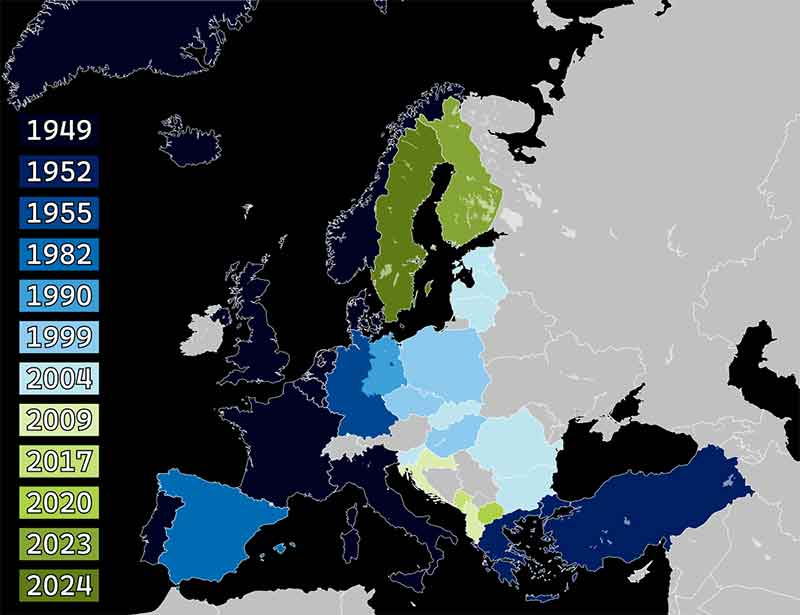Amid other crises, China’s economy has reeled from Western decoupling efforts. While several countries stand to gain from this process, it has only partially reduced China’s extensive global influence.
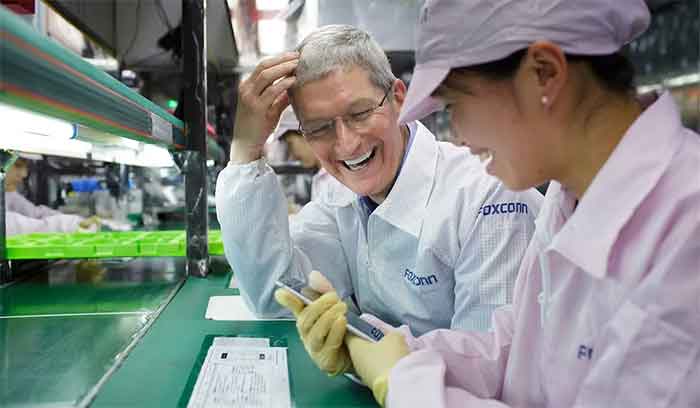
The 10th anniversary of the Belt and Road Initiative (BRI) in Beijing on October 18, 2023, witnessed the usual smiles and handshakes. But China’s economic landscape, dependent on robust supply chain networks, is facing turbulent times. The U.S.-led trade war had already disrupted Chinese industry and supply chains before the COVID-19 pandemic further backlogged ports and exacerbated disruptions. The Biden administration has meanwhile continued to expand policies restricting China’s access to the U.S. market and technologies, including new restrictions on advanced chip exports announced just one day before the BRI summit.
Foreign direct investment into China also plummeted by 43 percent in 2022, while the United States has persuaded allies to curtail their economic collaborations with China. For instance, Italy, which joined China’s BRI in 2019, announced its withdrawal from the project in April 2023. Meanwhile, the Netherlands began imposing restrictions on semiconductor exports to China in March. The 2018 arrest of two Canadian businessmen, widely perceived as retaliation for Canada’s detention of Huawei CFO Meng Wanzhou at Washington’s request, has made foreign executives increasingly hesitant to travel to China.
The greatest concern for Beijing, however, is the threat to China’s manufacturing and export-led economic model, which has driven China’s growth for most of the 21st century. In the first half of 2023, China’s share of U.S. goods imports stood at 13.3 percent, a decline from 21.6 percent in 2017, marking the lowest figure since 2003. Some of this decline can be attributed to “reshoring” policies, which are encouraging American companies to build factories in the U.S., with European companies also promoting local manufacturing.
Economic decoupling initiatives have also prompted Western companies to establish manufacturing infrastructure in friendly or nearby countries, often referred to as nearshoring or friend-shoring. Countries such as Vietnam, Malaysia, Taiwan, Indonesia, India, Mexico, and others are vying for Western companies’ attention, offering subsidies, tax breaks, and other incentives. The newest iPhone was assembled in India, for example, while more than half of Nike’s shoes are now made in Vietnam.
However, it is Mexico that appears poised to reap the most benefits from this “lifetime opportunity” according to Bank of America. Its proximity to the U.S. and the USMCA free trade agreement with the U.S. and Canada has driven American companies to ramp up production in Mexico. Combined with the growing automation of the U.S. manufacturing sector, these developments have sparked debate about whether China’s “peak manufacturing” has already passed.
Nonetheless, as the “world’s factory,” China’s dominance in manufacturing remains stable enough to support its economy. Its share of global manufacturing actually grew from 26 percent in 2017 to 31 percent in 2021 (aided by the global decline in manufacturing in the years leading up to and during the COVID-19 pandemic), whereas India, Mexico, and Vietnam contributed only 3 percent, 1.5 percent, and 0.6 percent, respectively. China’s share of global manufactured exports by value also grew from 17 percent to 21 percent in the same period, and despite some declines in bilateral trade, U.S.-China trade hit a record high in 2022.
China’s resilience to global supply chain shifts can be attributed to strategic infrastructure investments that have streamlined its manufacturing and export operations. Efficient ports, extensive highways, reliable rail systems, well-established industrial parks, stable governance, a large working-age population, and other factors set China apart from potential competitors.
Although the value of manufacturing in the U.S. has risen and 800,000 manufacturing jobs have been created over the last two years, for example, this has not kept up with job growth in other industries, and manufacturing’s share of U.S. GDP has continued to decline. There are also fears that the U.S. will have a shortage of 2.1 million skilled manufacturing workers by 2030. India faces challenges related to competition from cheaper imports, high input costs, taxes, and regulatory hurdles, while Mexico contends with corruption and instability from cartels and Vietnam grapples with power outages and bureaucratic red tape.
Instead, many of China’s manufacturing competitors have opted to collaborate with China, reinforcing traditional supply chain dependencies that Washington is striving to break. This is exemplified most clearly in Mexico, where the advantageous conditions for U.S. companies have also made it an attractive destination for Chinese companies seeking a nearby gateway to the U.S. market. Remarkably, 80 percent of the land leased to foreign companies in Mexican industrial parks is now in the hands of Chinese enterprises (compared to 15 percent for U.S. companies), allowing Chinese goods to be delivered for final assembly before being exported to the U.S.
This phenomenon extends beyond Mexico. At the end of 2022, the U.S. Department of Commerce discovered that major solar suppliers in Southeast Asia were barely altering Chinese products before they were sent to the U.S. Across the region, Chinese green tech companies are making significant inroads into the manufacturing infrastructure. Even Vietnam, despite its ongoing and historical tensions with China, has cautiously embraced Chinese companies looking to drastically expand their presence in the country.
After spending billions of dollars building economic relations with their Chinese counterparts, U.S. companies have also resisted cutting ties with their Chinese partners. A 2021 Federal Reserve research note suggested that many are underreporting their imports from China to evade tariffs imposed by Washington. Others are encouraging their Chinese partners to establish factories in North America. Additionally, the cancellation of programs (or those slated to expire in the next few years) allowing goods from many developing nations to enter the U.S. duty-free may leave room for China to step in as a preferred source for U.S. distributors.
Despite the limitations of Western decoupling policies, it’s worth noting that China is also working towards a form of decoupling to reduce its dependence on the West. Announced in 2015, the Made in China (MIC25) initiative seeks to eliminate Chinese companies’ reliance on foreign nations for critical technologies and products. Policies also continue to be introduced to expand China’s domestic market to compensate for restrictions on overseas markets.
China’s economy will continue to be characterized by strengths and weaknesses. The rising wages of Chinese workers have steadily eroded the international competitiveness of the country’s shrinking labor pool, while an ongoing property crisis has shaken faith in China’s domestic economy. Moreover, Beijing has become less liberal with capital, opting instead to recover outstanding loans from the BRI.
However, Chinese officials and businesses are increasingly lobbying local governments with “small but beautiful projects” that negate the need for consultation with more suspicious national leaders. China also remains crucial in areas such as rare-earth minerals and is expanding its role in manufacturing higher-end products, from aviation to green tech, to compete with high-tech Western firms. Chinese endeavors in Latin America and Southeast Asia to adopt Chinese supply chains also position it to sell to these markets.
Although it may seem that we have “already hit or passed the peak share of China in world manufacturing,” no other country has or is projected to rival China’s manufacturing power and export networks. Furthermore, neither China nor the West are able or willing to sever their economic ties. Even amid the collapse in relations between the West and Russia since 2022, Russian energy has continued to flow to Western countries, Western technology has continued to enter Russia, and Western companies that have said they are leaving Russia have remained.
The massive disruptions required for true economic decoupling from China are unpalatable to the public and the private sector. This reality is reflected in the shifting language of U.S. and EU officials, who now emphasize de-risking instead of decoupling from China. Chinese and Western companies instead look to continue bypassing restrictions and conducting business, reflecting the resilience of the Chinese manufacturing sector and making it clear that U.S.-Western economic codependency is a formidable bond that won’t be easily broken.
John P. Ruehl is an Australian-American journalist living in Washington, D.C., and a world affairs correspondent for the Independent Media Institute. He is a contributing editor to Strategic Policy and a contributor to several other foreign affairs publications. His book, Budget Superpower: How Russia Challenges the West With an Economy Smaller Than Texas’, was published in December 2022.
This article was produced by Globetrotter.

